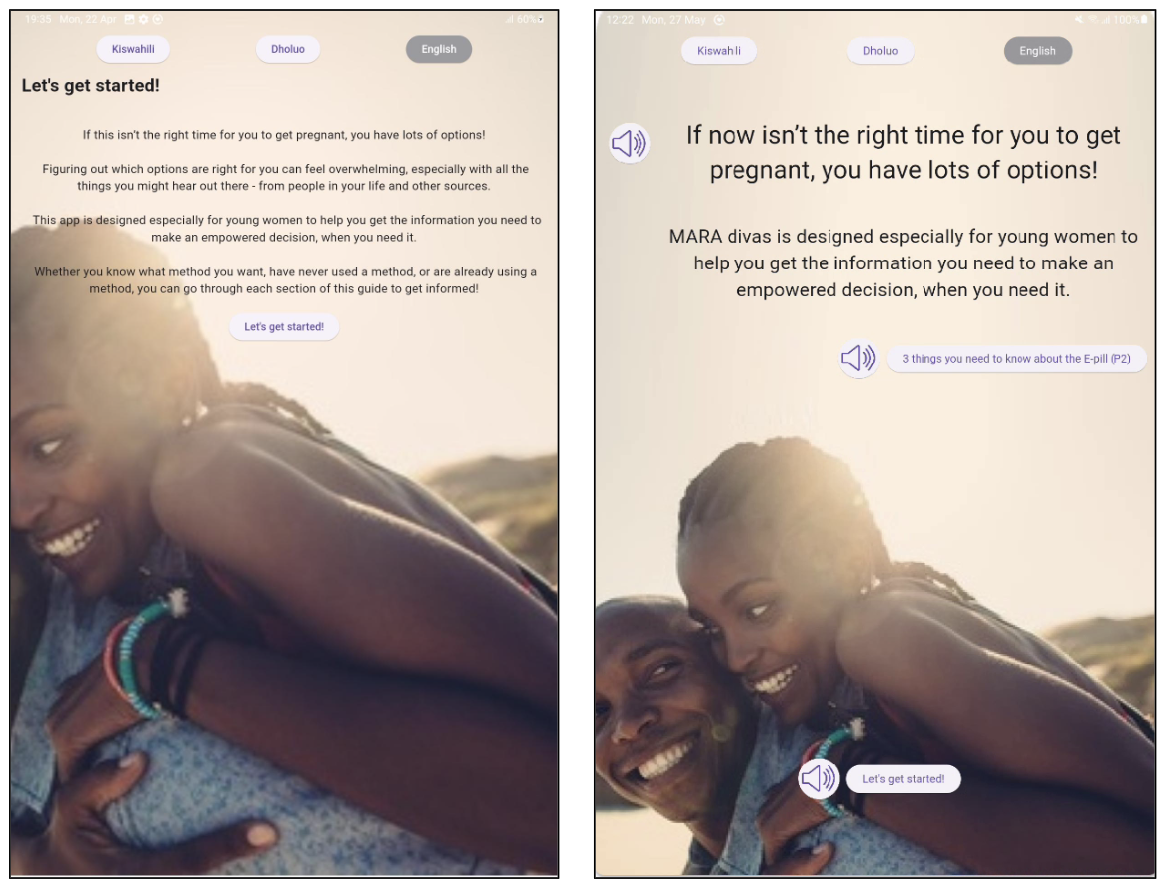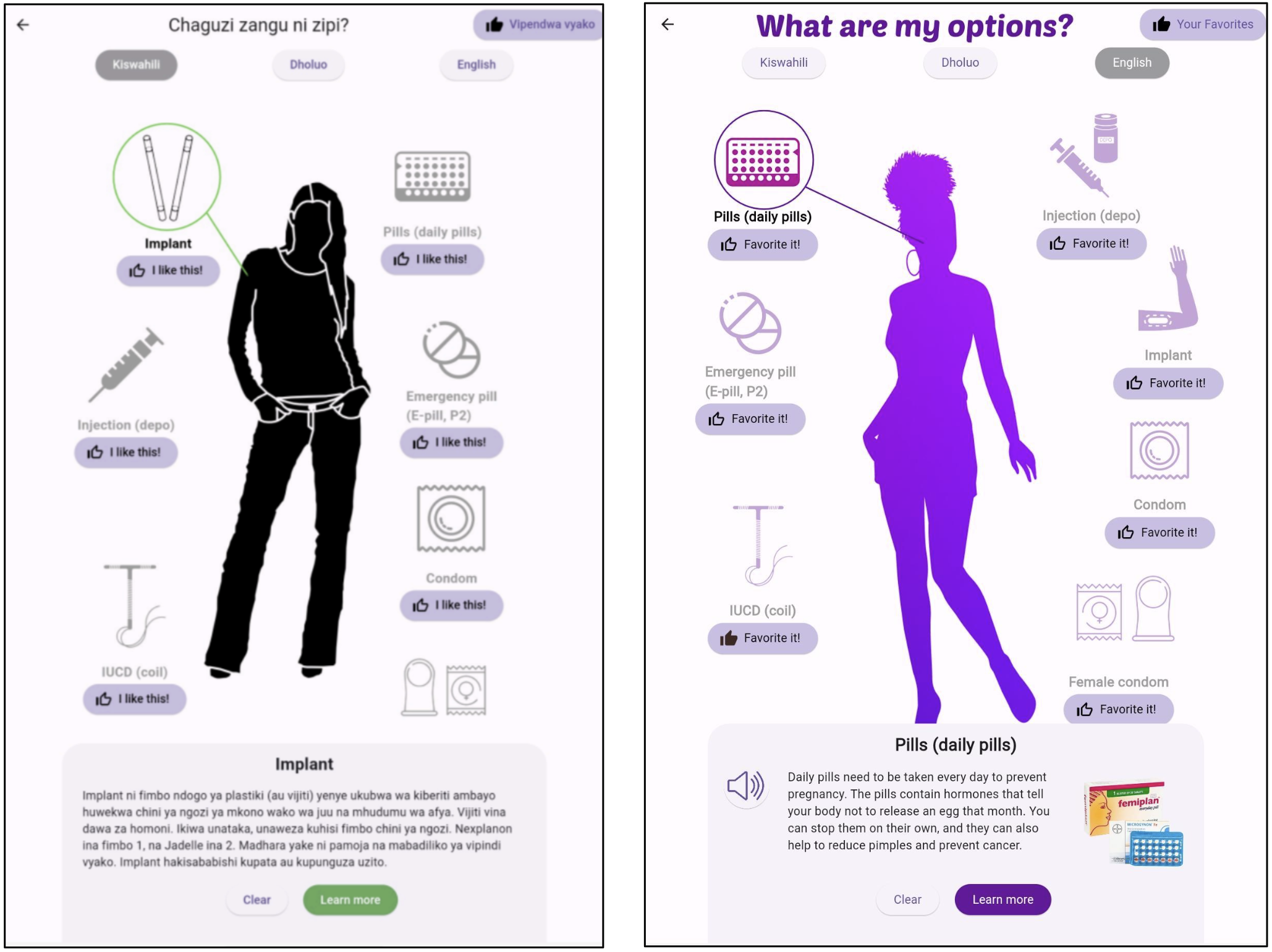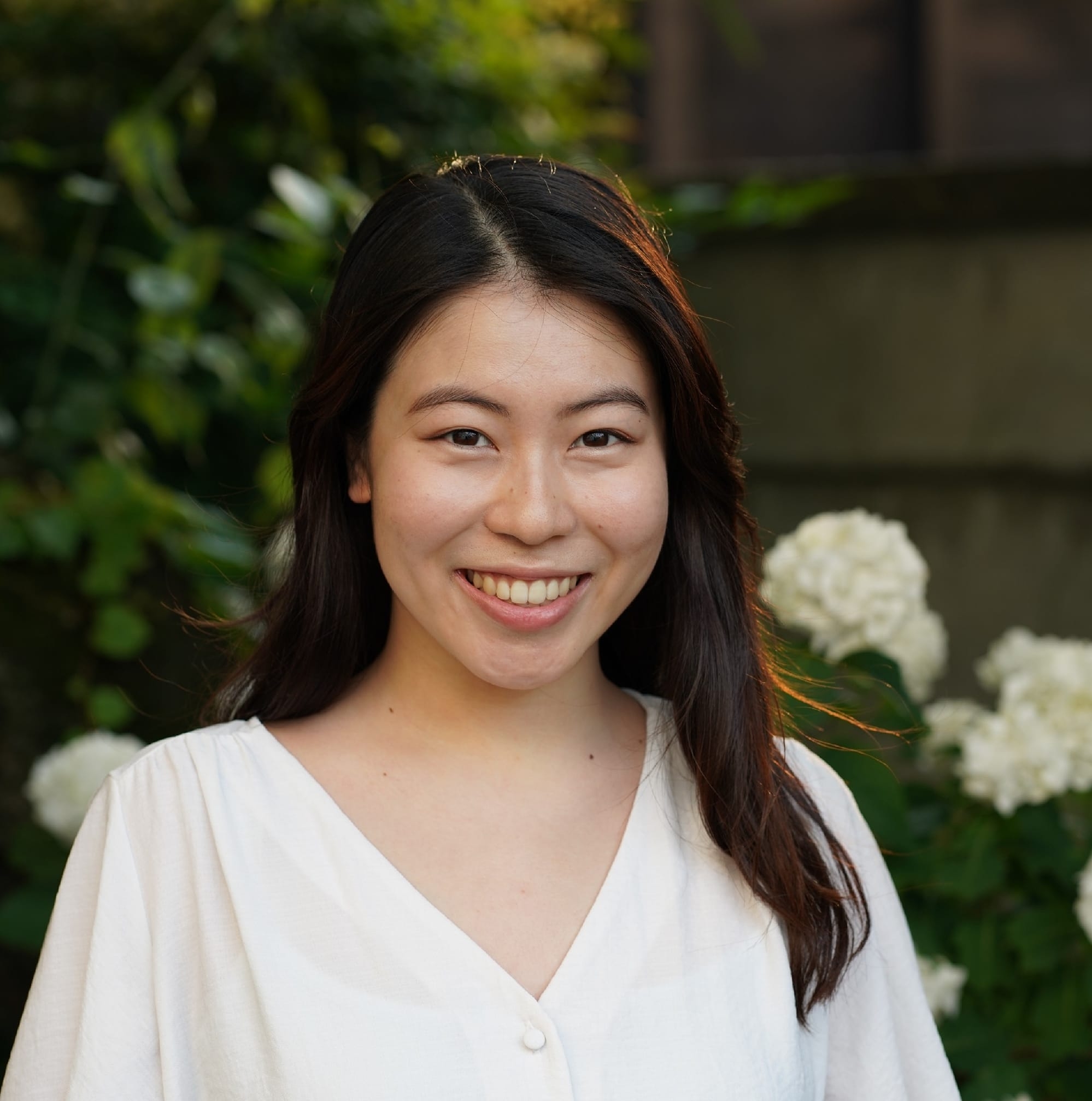Contraceptive Decision-Support App in Kenya
📄 Peer-Reviewed Publication: ACM CHI 2025
Project Overview
Problem: Adolescent girls and young women (AGYW) aged 15–24 in Kenya lack contraceptive decision-support resources tailored to their needs and experiences. Pharmacies are a key access point for contraceptive services, but pharmacy providers have limited capacity to offer AGYW-specific counseling.
Goal: Improve the quality and person-centeredness of contraceptive services for AGYW in the pharmacy setting.
Approach: Developed an Android app that provides tailored contraceptive decision-support for AGYW in pharmacies in Kenya.
Steps:
- Guided engineering team to translate Figma designs into an Android app using the Flutter platform.
- Delivered a functional app to co-design workshops with 45+ AGYW and pharmacy staff in Kenya.
- Refined UX based on workshop insights.
- Piloted the app in Kenyan pharmacies with 100+ AGYW across three months.
- Explored integration of AI-enabled chatbots into the app.
App Development
We built an Android app using Flutter, targeting Samsung Galaxy tablets. The design centered on AGYW preferences and needs, achieved through four key principles:
- App Content: Crafted by a sexual and reproductive health expert based on years of formative research identifying decision-making considerations for AGYW. The app incorporated these key topics.
- Multimedia Content: Included videos and audio narration to support users with varying literacy levels.
- Multilingual Design: Offered text, video, and audio in three primary local languages, with the ability to switch languages on each page.
- Decision-Support Tool: Integrated a quiz-based tool providing contraceptive method recommendations tailored to user preferences.
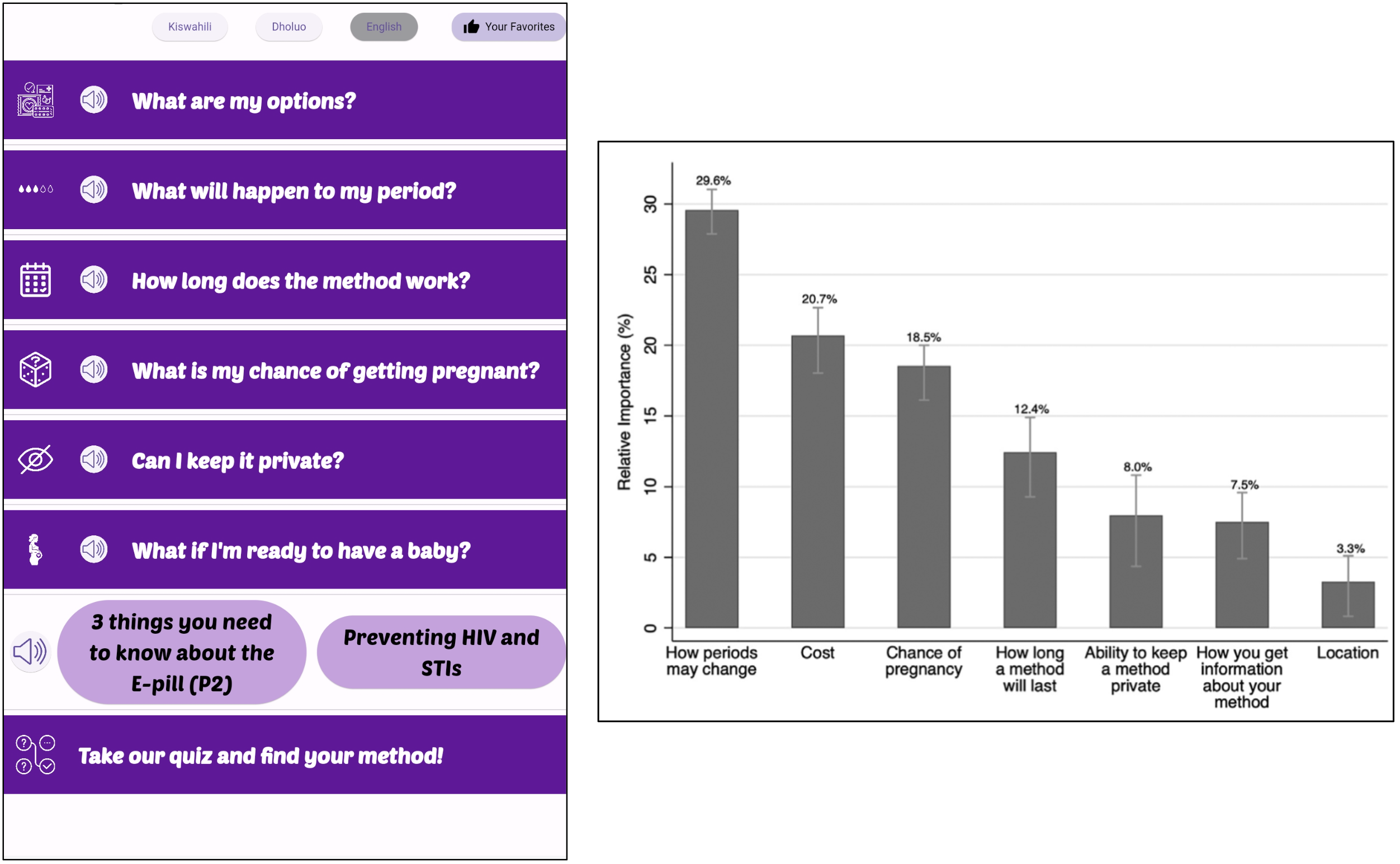
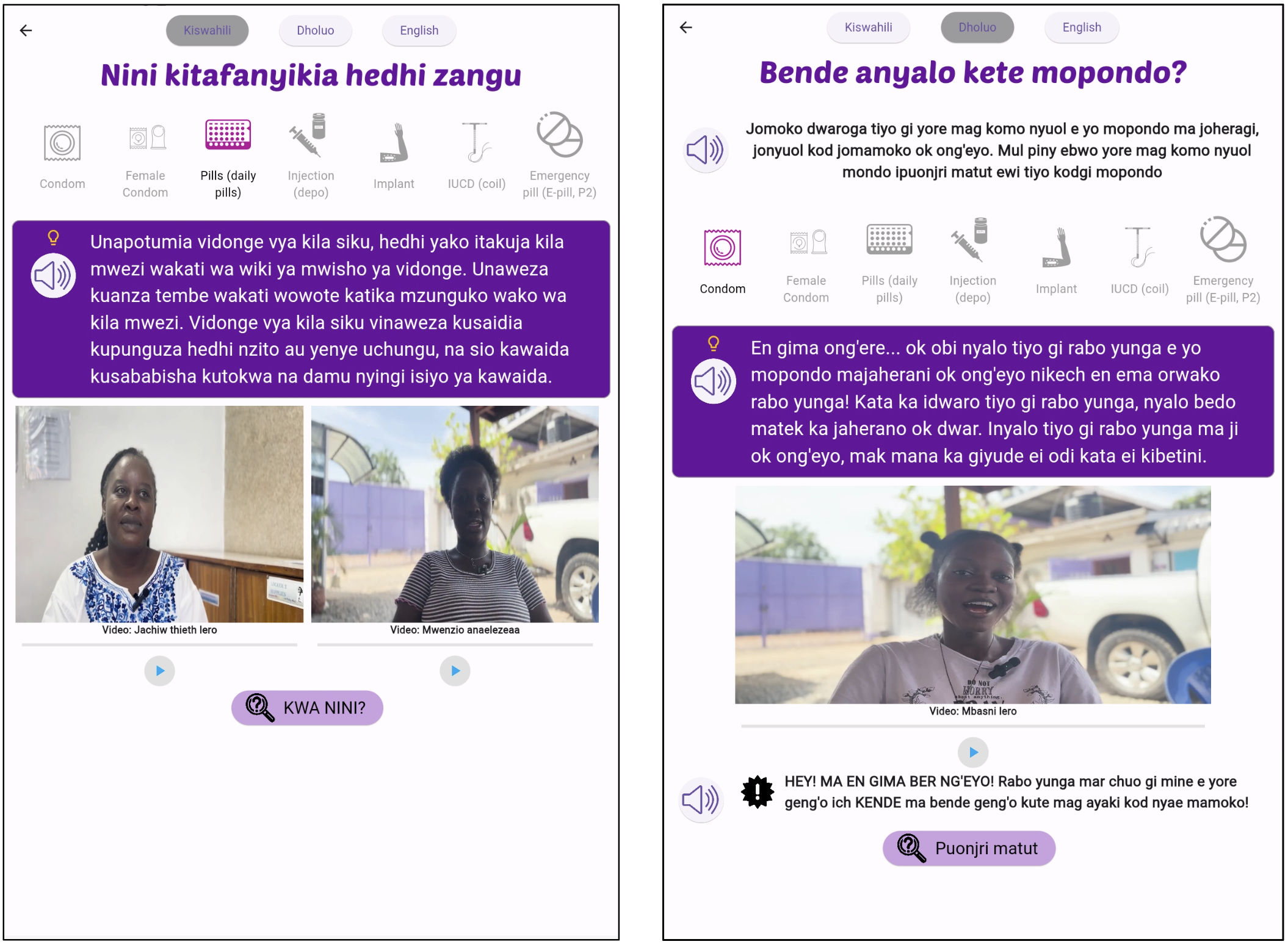
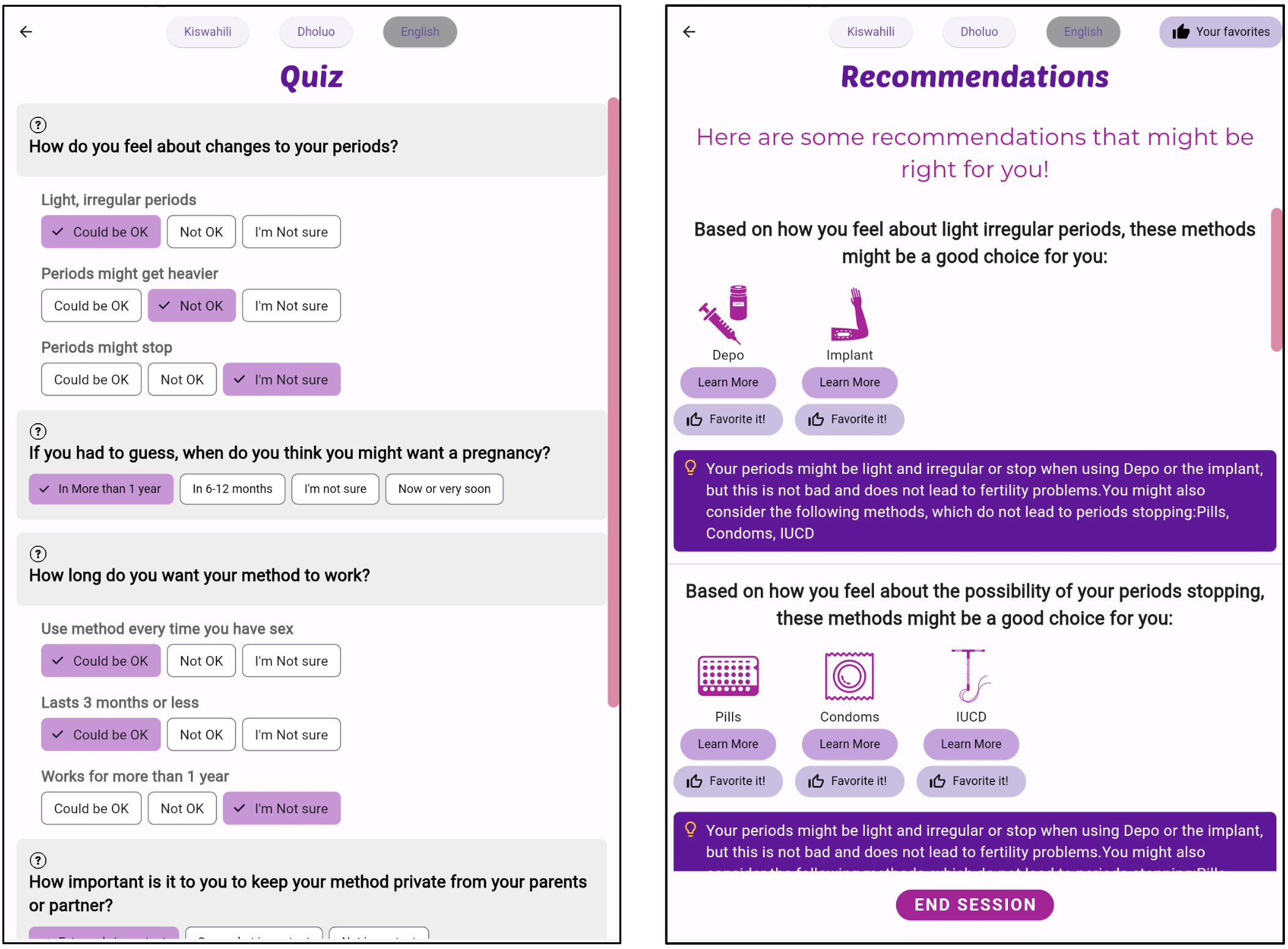
Co-Design Workshops in Kisumu, Kenya
We conducted co-design workshops with 33 AGYW and 10 pharmacy staff in Kisumu, Kenya. Workshop activities included:
- Journey mapping: Visualized the entire pharmacy visit experience, identifying pain points and moments of joy.
- Free app engagement: Allowed participants to explore the app freely for familiarization.
- Usability testing: Conducted 1:1 sessions using 12 structured tasks (each participant completed 3).
- Facilitated app engagement: Guided discussions around specific app sections and reflections on similarities with pharmacist guidance.
- App feedback: Used the “I Like, I Wish, What If” method to collect improvement ideas.
- Group discussion: Semi-structured reflections on how the app could change pharmacy experiences for AGYW.
Key Findings
- Pharmacists play differential roles depending on literacy levels.
Older AGYW (18–24) generally had higher digital and health literacy, requiring more tailored information, whereas younger AGYW (15–17) needed foundational guidance. Pharmacists must adapt their engagement accordingly. - Placing the app in pharmacies extends impact across AGYW groups.
Older AGYW are easier to reach digitally, but limiting design to them risks excluding younger users. Deploying the app in pharmacies ensures infrastructure and human support for all literacy levels. - Iterative app improvements.
Several UX/UI updates were made during testing, shown below.

